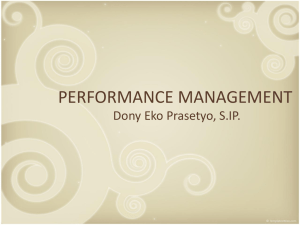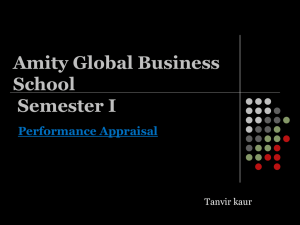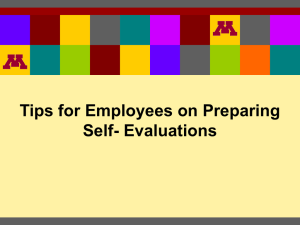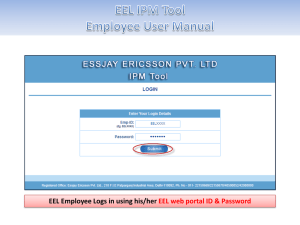Protection Motivation Theory (PMT) Chapter 5 Authors: DiClemente
advertisement
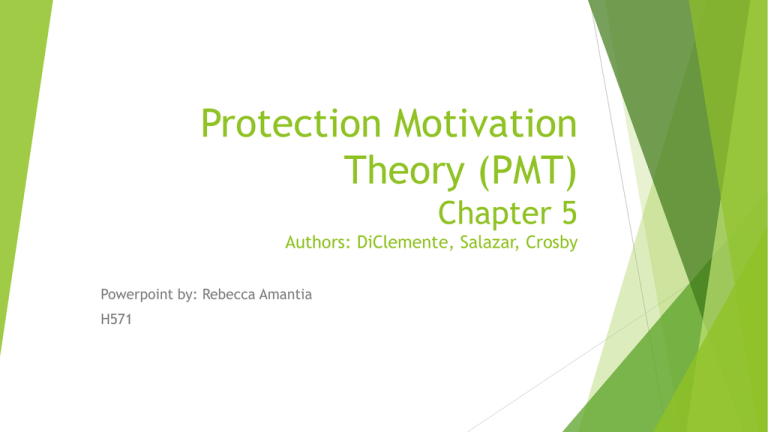
Protection Motivation Theory (PMT) Chapter 5 Authors: DiClemente, Salazar, Crosby Powerpoint by: Rebecca Amantia H571 Overview Introduction of PMT History Components of PMT Example Applied in Public Health Two Public Health examples PMT Introduction Communication Theory To better understand the specific cognitive process underlying how fear appeals motivate people to change their behavior. Perceived threat + Cognitive processes. Analysis of rewards and costs for engaging in either a maladaptive behavior or adaptive response. Designing messages for health awareness campaigns that utilize fear as a motivator for positive behavior. Ex: Antismoking advertisements. . History of PMT Fear Prior Dr. R. W. Rogers in 1975 Fear was an emotional trigger for trial-and –error type responses in an attempt to escape the experience of fear. to explain the cognitive effects of fear appeals. Lazarus & Leventhal Fear triggers an automatic appraisal. Differ in Sensitivity & Vulnerability, Interactions & Reactions. Danger Control & Fear Control 1st three factors of PMT: Threat Severity, Threat Vulnerability, & Response Efficacy PMT known as today Include self efficacy and emphasize cognitive processes, which motivates either adaptive or maladaptive behavioral responses. Components of PMT The Threat Appraisal & the Coping Appraisal are in close proximity to Protection Motivation Fear appeal Rewards of Maladaptive response Response Efficacy Self-Efficacy Severity Vulnerability Costs of Adaptive response Threat appraisal Protection Motivation Coping appraisal Protection Motivation: A mediating variable whose function is to direct protective health behavior. THREAT APPRAISAL: Severity & Vulnerability Assessment of the seriousness of a health threat. Fear appeal Estimating Vulnerability (Probability of a negative outcome) Severity of the negative outcome if no action is taken. Rewards of Maladaptive response Severity Vulnerability Threat appraisal Protection Motivation THREAT APPRAISAL: Rewards Rewards are positive consequences for a maladaptive behavioral response. Fear appeal Rewards of Maladaptive response Severity Vulnerability Threat appraisal Protection Motivation COPING APPRAISAL: Response & Self Efficacy Response Efficacy Evaluation of how effective the behavior will be in protecting the individual from harm. Self Efficacy Fear appeal The individuals evaluation of their capacity to perform the recommended behavior. Response Efficacy SelfEfficacy Costs of Adaptive response Coping appraisal Protection Motivation COPING APPRAISAL: Cost Costs Fear appeal involves physical, social, or psychological consequences for engaging in the adaptive response. Response Efficacy SelfEfficacy Costs of Adaptive response Coping appraisal Protection Motivation EXAMPLE Health Threat: alcohol poisoning Vulnerability: Probability of alcohol poisoning if one continues to drink too much. Severity: Mortality or Morbidity of alcohol poisoning. Response Efficacy : will drinking less prevent alcohol poisoning. Self-Efficacy: Individuals evaluation of their ability to limit their drinks or quit. Rewards of Maladaptive Response: Rewards of continuing to heavily drink (being cool or popular) Cost of Adaptive Response: Cost to drinking less (not being cool or being made fun of) PMT Applied Useful to health communication reducing alcohol use, enhancing healthy lifestyles, enhancing diagnostic health behaviors and preventing disease. Utilized to discover which part of message design has the greatest impact on message efficacy. Successful health awareness message using fear appeal. Example: Anti-smoking commercial https://www.youtube.com/watch?v=5zWB4dLYChM https://www.youtube.com/watch?v=3eUOjSTZMIE Thank You!




